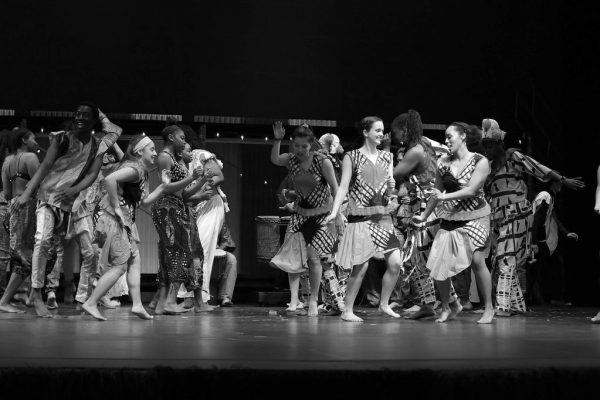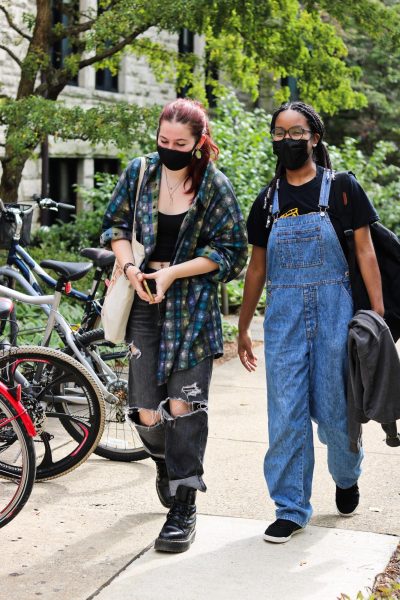Lack of Local Political Opportunity May Disenchant Prospective Students
Over the past few weeks, admitted students have been arriving to campus in droves to check out Oberlin. Some of them will commit and some of them won’t, as is the nature of the admissions process. Many students will pick their school based on the variety of academic departments offered, student-to-faculty ratio, quality of professors, cost of attendance, or how good the food is — sad, maybe, but true. Recently, however, I happened upon a Facebook post from an alum who said that their friends’ daughter was admitted to Oberlin and so her parents took her to check out the College. Apparently they really liked Oberlin but were “totally bummed out by the abundance of Trumpian signs, bumper stickers, and hats they saw everywhere but campus” which have “given the daughter pause to accept.” It poses the question of whether Ohio’s red politics are discouraging students from coming here.
The question is certainly reasonable. I am the first to admit that I experienced my share of doubt about attending college in the Midwest. I don’t particularly enjoy driving down the road and seeing lawns adorned with Trump flags and bumpers embellished with Blue Lives Matter stickers. In both 2016 and 2020, the state went for Trump by about an 8 percent margin. Lorain County also went for Trump in 2020. However, Lorain County and the state of Ohio have had their moments. Despite Trump’s 2020 victory in Lorain County, it went for Clinton in 2016. In the 2018 midterm elections, Lorain County elected the Democratic candidate in every statewide race. We have a Democratic Senator, Sherrod Brown.
Besides the expected comments on the Facebook post about how Oberlin is a bubble anyway and we never have to leave the city limits so the point of the surrounding area is somewhat moot, there was also a fair bit of discourse surrounding the benefits of attending college in a more politically diverse area. There were the snarky comments of course, accusing the poor prospie of being politically close-minded and not being able to handle different opinions. The part of the discourse I found to be much more compelling, though, was the portion discussing how students could use their positioning as new Ohio residents to influence the state’s politics by voting and canvassing. Politically active students would likely be charmed by the idea of getting politically involved in a swing state, and if those opportunities were more abundant, some of the anxiety around living in a red-leaning area might be counterbalanced by excitement and desire to bring their political passions to the Midwest.
As a prospective student, I heard nothing about students’ off-campus political activity, perhaps largely because it doesn’t exist. Even since arriving at Oberlin, I have yet to find many opportunities to get involved in local politics. I registered to vote here a few weeks ago in Mudd Center when the League of Women Voters came to help students fill out paperwork, and I know that the Politics department and Journalism Integrative Concentration offered two students an opportunity to attend a gubernatorial debate, but that seems to be the extent of it.
I recognize that the technicalities of what political activity the College can and cannot sponsor make it difficult to create structured opportunities for students to get involved politically. Because Oberlin is a tax-exempt nonprofit, it cannot sponsor any activity in favor of or against a specific candidate. Because most student organizations receive money from the College, they cannot sponsor partisan events.
However, there are plenty of nonpartisan opportunities that would allow students to fulfill their desire for political action. Student organizations could hold nonpartisan voter registration drives or coordinate transportation for students to volunteer at drives off campus. The Career Development Center could host workshops focused on how to reach out to local political organizations about internships and work opportunities.
Not only should these types of events be more accessible to current students, they should also be heavily advertised to prospective students. It is tempting to put the onus on the Admissions Office to publicize these kinds of events, but there is only so much messaging they can realistically send out. Their messaging focuses largely on academics which, of course, are the biggest reason students are here. In order to focus on this niche area of off-campus political opportunities, they would be forced to divert time, energy, and resources away from other, arguably more critical, messaging.
Who, then, would take responsibility for informing prospective students about all of these opportunities? Whoever is responsible for them and benefits from them. The Politics department should make sure to talk to prospective students about how they sent two students to a gubernatorial debate, or at least help them get in contact with the students who went. Students who find exciting political opportunities could submit posts to the Oberlin blogs about their experiences. Political student organizations that have the bandwidth should hold open meetings during particularly busy admissions times where they can talk about their advocacy and how to get involved — though the shortcomings in this particular department may be attributed to the recent downfall of the Oberlin College Democrats.
This is not to say that the Admissions Office cannot be involved in this messaging. They should certainly be aware of what other groups on campus are doing in this vein so they can point prospective students in the right direction, but ultimately, creating and promoting these opportunities must be a collective effort.




